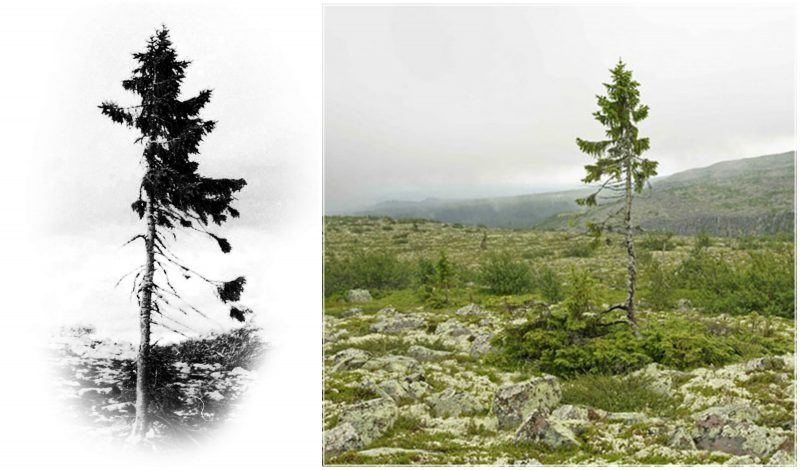The oldest living cloned Norwegian Spruce can be found in Sweden on Fulufjallet Mountain. It is at least 9,550 years old, sixteen feet tall, and is called Old Tjikko.
This tree isn’t the oldest living tree in the world, but it is the oldest living, clonal Norway Spruce. Umea University geography professor, Leif Kullman discovered this tree and gave it the name “Old Tjikko,” after his dog that had died.
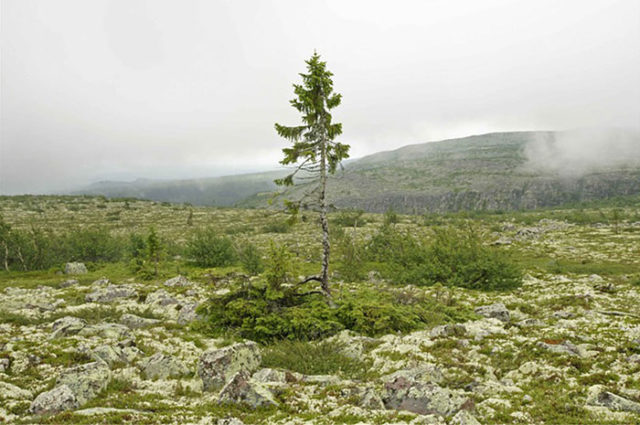
During its life cycle of thousands of years, the tree grew as a stunted shrub (krummholz formation) because of the harsh environment in which it lives and the extreme weather conditions. However, during the Earth’s warming that has occurred over the last century, the tree has now begun a growth cycle of natural tree formation, and its transition to a healthy growth structure is due to global warming.
It has been recorded that during the ice age, the sea level was much lower than today, as much as 120 meters lower. So, what is now the North Sea between England and Norway was at that time barren forest land. And during this period, winds and low temperatures made the growth of “Old Tjikko” similar to that of a bonsai tree; under these harsh conditions, a large tree could not sustain the growth to get this old.
The primary reason for the survival of this tree over such an extended period is because of vegetative cloning; this means that although the part of the tree that is visible is still relatively young, it is a part of an ancient root system which dates back thousands of years.
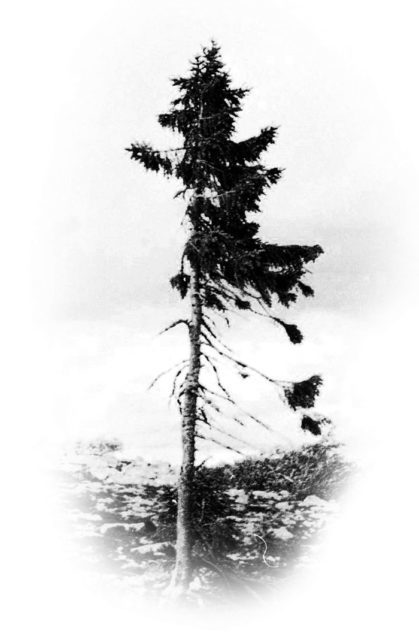
In this process, the trunk of the tree will live for approximately 600 years or so, but when it dies, another takes its place due to the cloning principle while sustaining the same ancient root system.
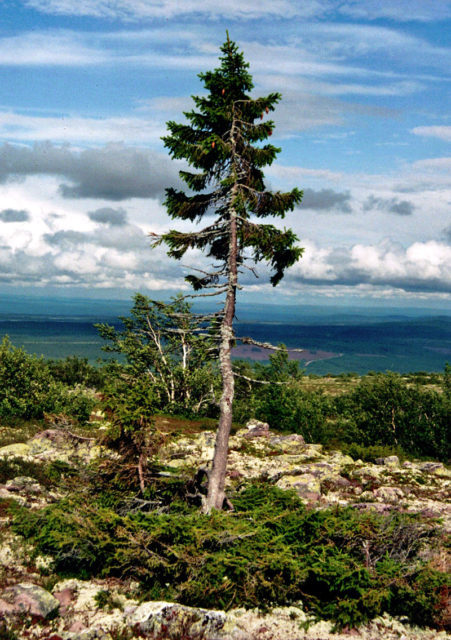
The Norway Spruce characteristically has branches that naturally hang downwards; each winter the heavy snowfall forces the branches of the tree down to ground level. Once on the ground, the branches will begin to take root, and they can stay alive and grow the following year again. This process is called layering; it is an integral part of the cloning process, occurring when the limbs of a Norway Spruce come into contact with the bare earth, allowing new roots to begin to sprout.
Determining the age of “Old Tjikko” was done by carbon dating – matching natural plant material that was gathered from beneath the tree. The trunk of the tree is approximated to be several hundred years old, but the plant itself, particularly the root system, is much older due to the layering process. When carbon dating of the root system was completed, it was realized that some of the roots were as much as 9,550 years old. It is estimated that the beginning of its growth period was around 7550 BC. As a contrast, giving you an appreciation of just how old this is, humanity didn’t begin to write until 4,000 BC!
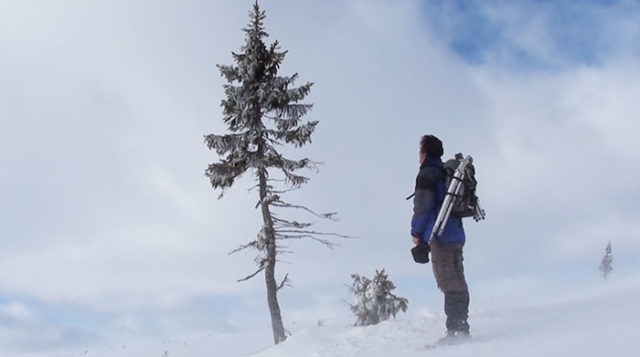
Up until this point, the Norwegian Spruce was believed to be a somewhat new species of tree in Sweden. Scandinavian Europe was in the midst of an ice age up until 11,000 years ago. Trees reaching the age of “Old Tjikko” were thought to be impossible in this area.
To protect the legacy and the future of “Old Tjikko,” natural resource conservation officials are considering placing a barrier around the tree to prevent any vandalism or damage caused by trophy-hunters.
